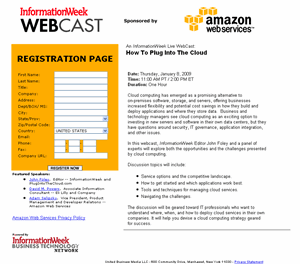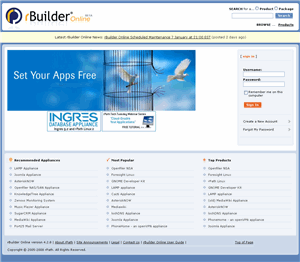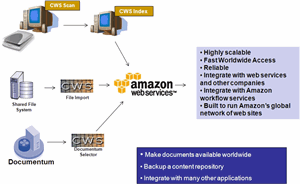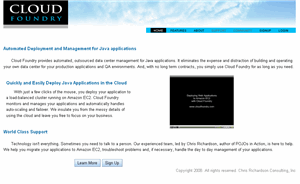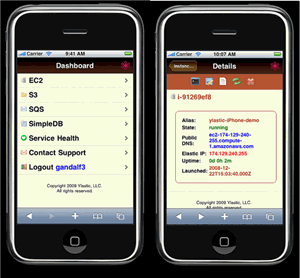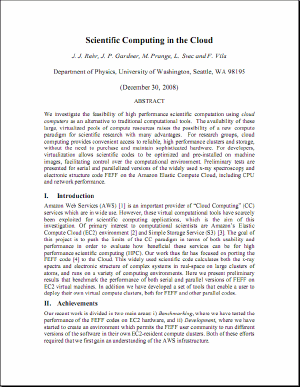AWS News Blog
AWS Links – Wednesday, January 7, 2009
|
|
As usual, I’ve got plenty to blog about. Here’s a glimpse at some of the interesting things that have recently landed in my inbox.
On Thursday, January 8th, Information Week and Amazon will present a Webcast titled How To Plug Into The Cloud. Attendees will learn how Eli Lilly has used Amazon’s EC2 servers and S3 storage to support its pharmaceuticals research. Presenters will include Dave Powers from Eli Lilly and Adam Selipsky from Amazon Web Services. Attendance is free but you do need to preregister.
The folks at rPath will be conducting a series of tech events on alternate Tuesdays starting on January 13th. Attendees at the first event will learn how to build a virtual appliance using rBuilder Online and launch it on Amazon EC2. Once again, attendance is free but preregistration is a must!
Content Workspace has built a document scanning and indexing service around Amazon S3 and the Amazon Mechanical Turk. Access to the Mechanical Turk workforce gives them the ability to offer document and form classification, document indexing, data entry, translation, detection of duplicates, and more.
I met Chris Richardson a year or two ago at a conference in Philadelphia. Since then we’ve stayed in touch and have bumped in to each other at conferences on the east and west coast. His Cloud Tools project makes it easy to deploy, test, and manage Java EE applications on EC2. Now, Chris has created the Cloud Foundry in order to make this process even easier. You can simply drop your application’s “.war” files into a container managed by Cloud Factory and running on EC2. You can choose between a number of runtime topologies and can manage your entire cluster with one button. Learn more by watching the Cloud Foundry screencast.
Mike from Cirrhus9 wrote to tell about his company and their cloud computing service offerings. They focus on the Life Sciences industry, with 3 of the 4 founders coming from the pharmaceuticals business. They got together as a “Cloud Integrator” to help IT managers navigate and leverage cloud computing. Their offerings include an evaluation methodology to evaluate the feasibility of moving individual applications to the cloud. They also understand the FDA Qualification and Validation process and can work with companies that would like to move health care applications into the cloud.
They’ve also created CloudBuntu, a lightweight managed desktop running on EC2 and accessible through a web browser.
By way of the Ylastic blog comes news that their very full-featured AWS management application can now be run on an Apple iPhone. Using Ylastic you can architect, manage, and monitor your AWS cloud computing environment. Watch this application in action on the Ylastic screencast.
I now have proof that cloud computing can be hereditary! My son Stephen is studying Applied Math and Economics at the University of Washington. He’s also working on a really interesting research project in the Economics department. The project makes use of the Mechanical Turk in a very unique way. The paper is still being written and I’ll be sure to link to it when it finally arrives. Over the holiday break Stephen needed to parse some large XML files. The parsing was taking forever on his laptop, so he launched an Extra Large EC2 instance and did his work there instead. In his post, he explains what he did and also provides a photo-illustrated tour of how he set up EC2 and EBS.
Finally (I am out of time, not material) Researchers in the Physics Department at the University of Washington has prepared a report on the topic of Scientific Computing in the Cloud. They have investigated the feasibility performing scientific computing in the cloud (using EC2) as an alternative to traditional computational tools. They note that “For research groups, cloud computing provides convenient access to reliable, high performance clusters and storage, without the need to purchase and maintain sophisticated hardware. For developers, virtualization allows scientific codes to be optimized and pre-installed on machine images, facilitating control over the computational environment.”
And that’s it for today. Send me information about what you are doing with AWS and I’ll do my best to fit you in.
–Jeff;

